In programming, lists are one of the fundamental data structures that help you organize and manage data efficiently. They are central to many programming languages, including Python. In this tutorial, you will learn what lists are, how to create, edit, and use them. These steps form the basis for understanding lists in Python and how they work.
Key Takeaways
- Lists are also referred to as arrays in other programming languages.
- In Python, lists are created with square brackets and can contain different data types.
- You can access and edit elements based on their index.
- Lists can be dynamically expanded and edited.
Step-by-Step Guide
What are Lists?
Lists in Python are a collection of elements stored in a specific order. They are represented in square brackets and can contain various data types such as strings, integers, and more. You can think of a list as a series of elements accessible by a specific index.
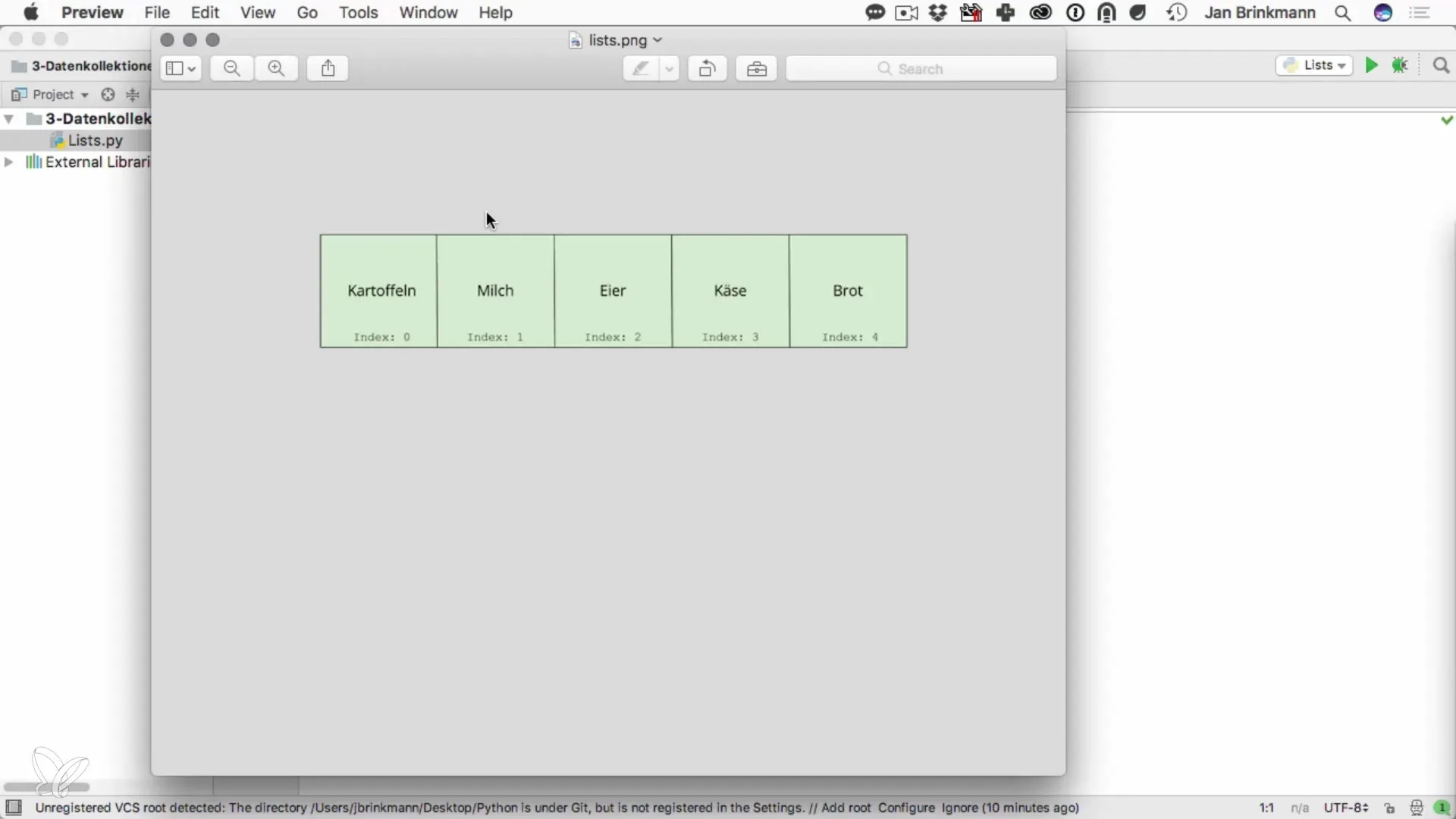
Creating Lists
You can easily create an empty list by using square brackets. Alternatively, you can also pass values directly during initialization.
With this method, you store multiple strings in a single list.
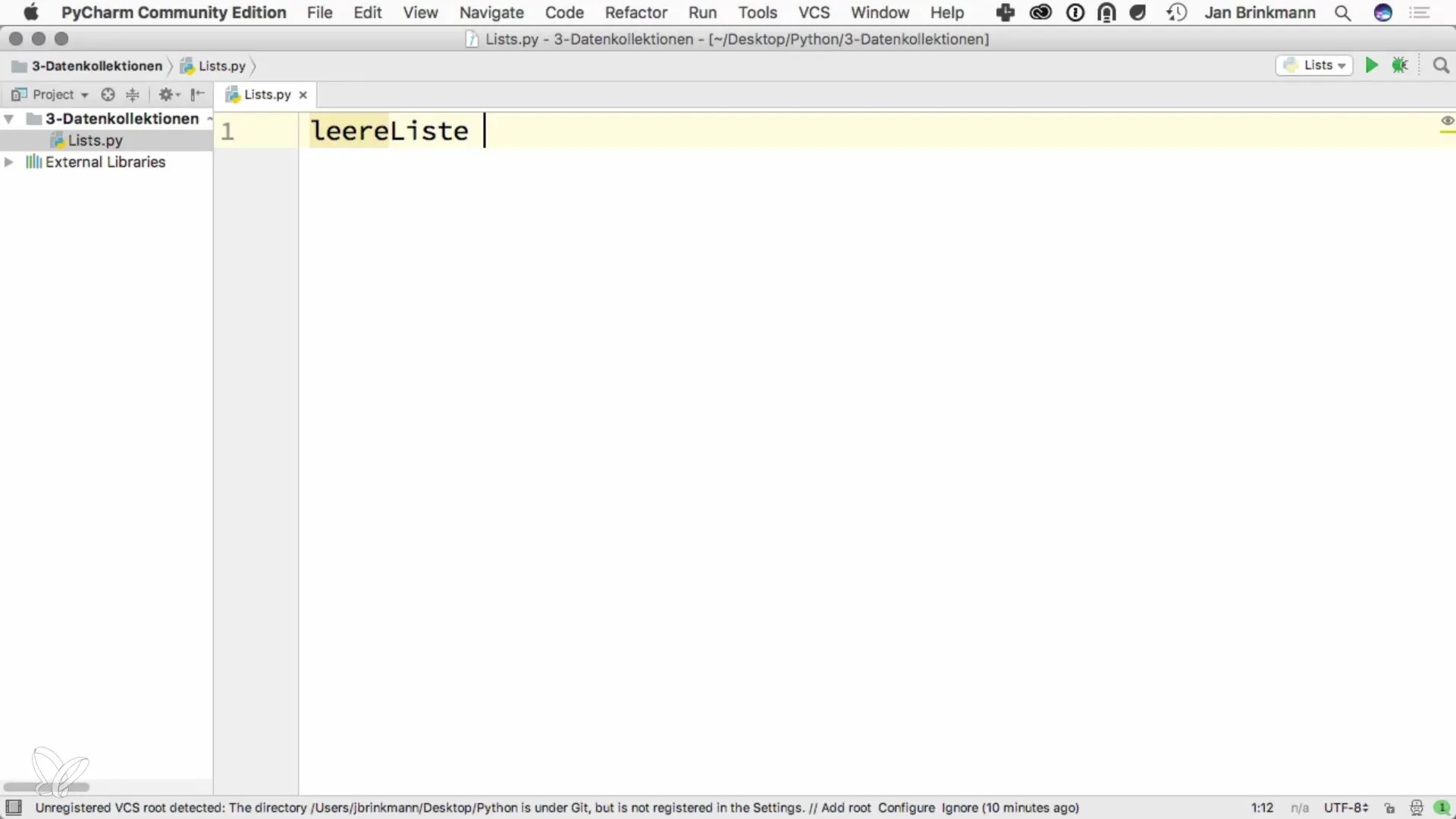
Accessing Elements
Accessing elements in a list is done through the index of the elements, starting from 0.
Here, the index indicates the desired access point. Note that you can also use negative indices to access the list from the end. An index of -1 refers to the last element.
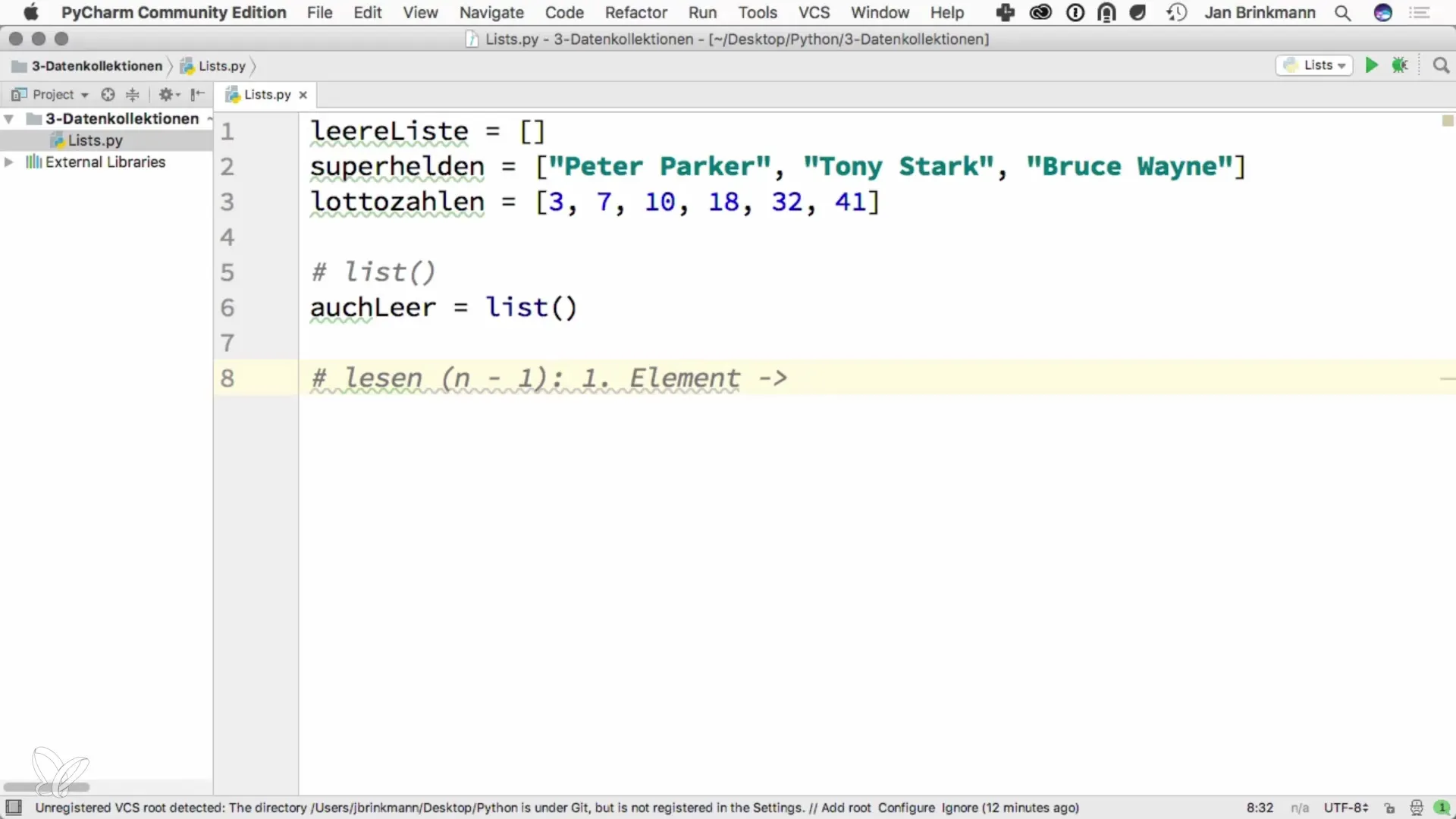
Adding Elements
To add an element to the end of the list, you can use the append() method.
If you want to insert a value at a specific index, you use the insert() method. This allows you to insert the new value exactly where you need it.
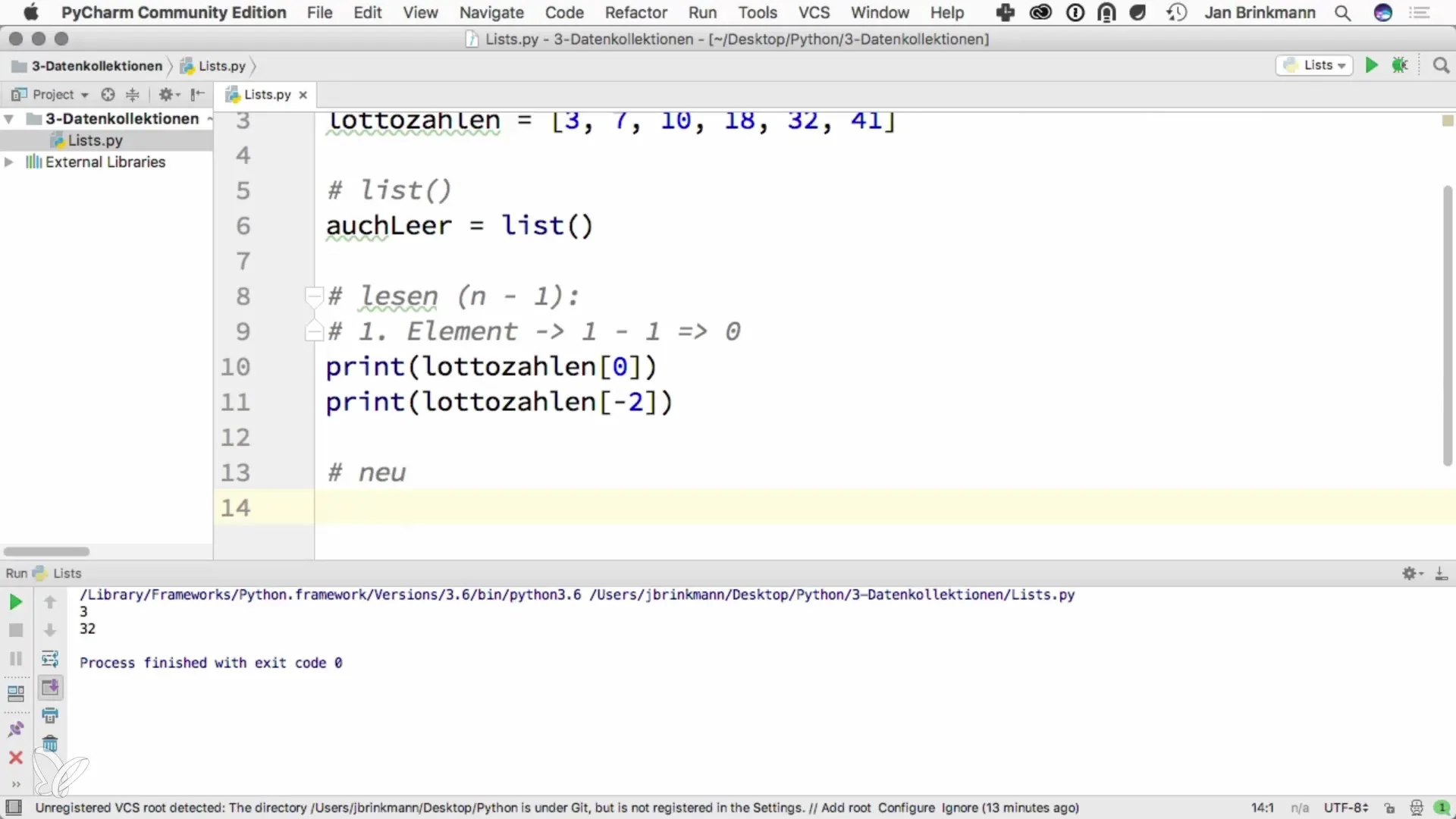
Updating Elements
You can easily update elements in your list by reassigning them via their index.
This changes the first element in the list.
Deleting Elements
To delete an element from a list, there are several options. You can use the remove() method to delete an element by its value.
Both methods are useful, depending on whether you know the value or the position of the element.
Determining the Length of a List
To determine the number of elements in a list, you can use the len() function. This is especially helpful if you are working in loops or want to ensure you stay within the boundaries of your list.
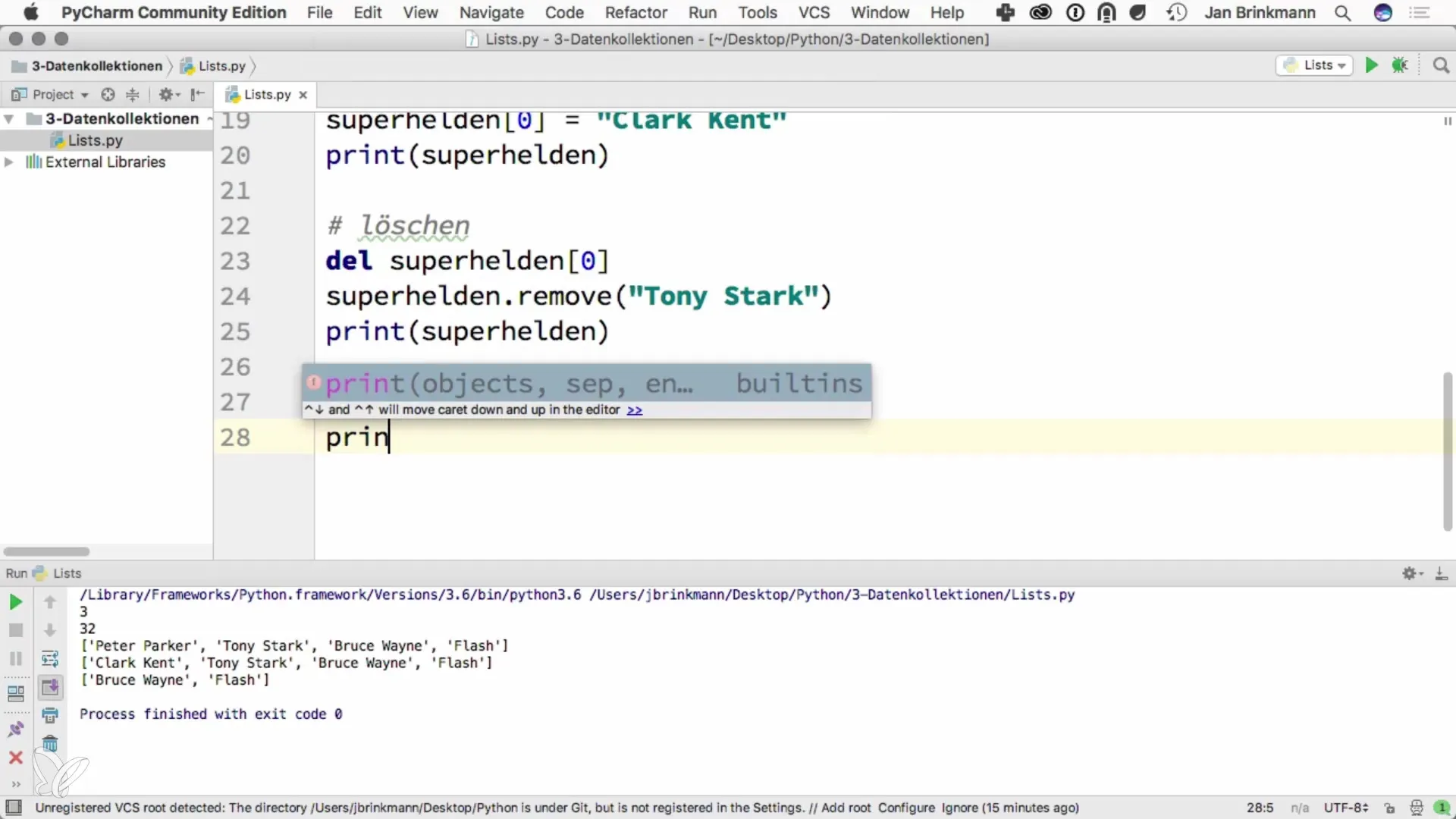
Error Handling
It is important to watch out for errors. For example, if you attempt to access an index that does not exist (e.g., index 99 in a list with only 2 elements), you will receive an "IndexError". Therefore, you should always ensure that the index is valid before accessing it.
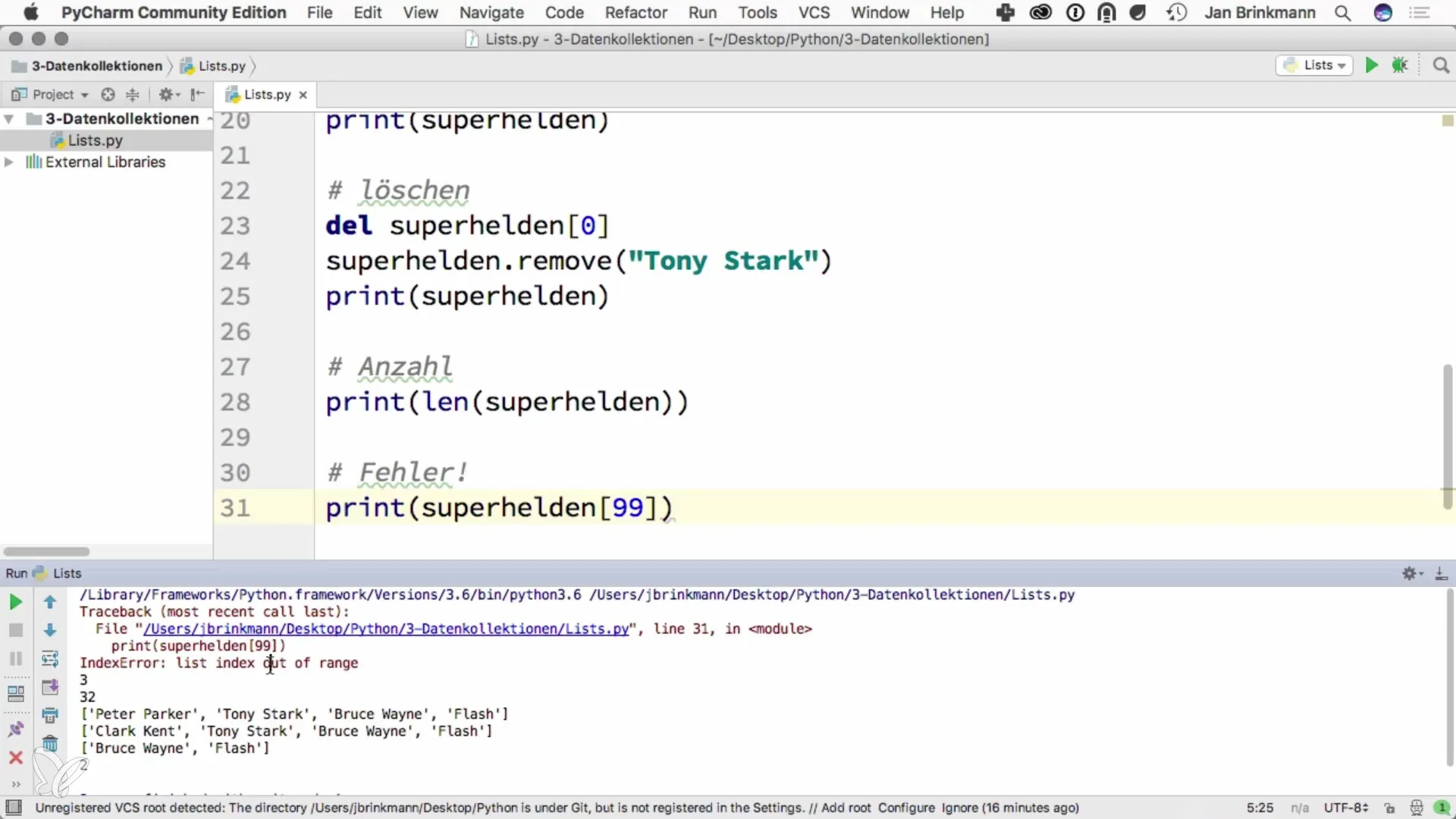
Slicing Lists
The so-called "slicing" allows you to extract portions of a list.
This slices from index 0 to 2 (excluding the value 2).
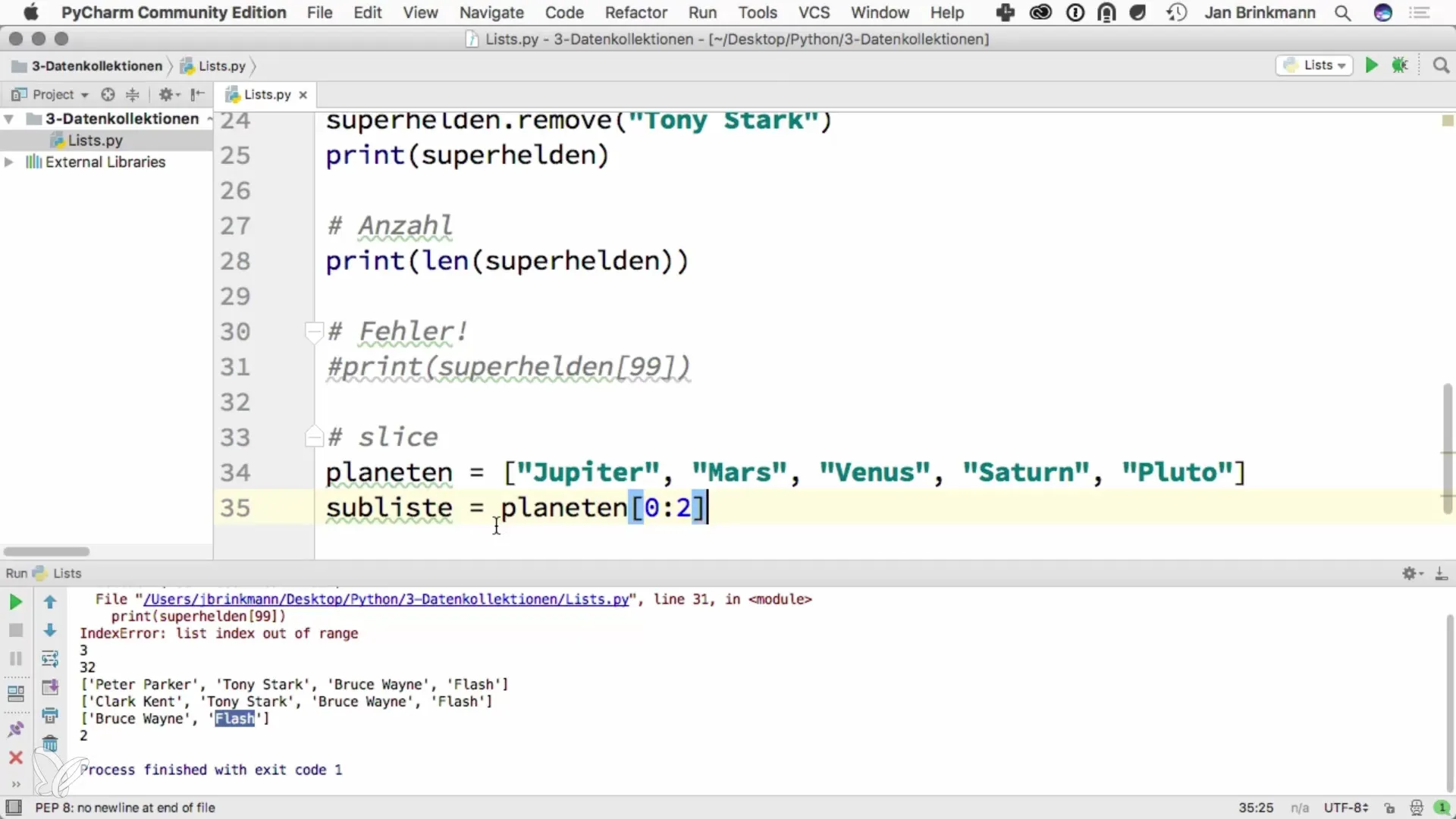
Combining Lists
You can also combine lists.
This method concatenates the two lists into a new list.
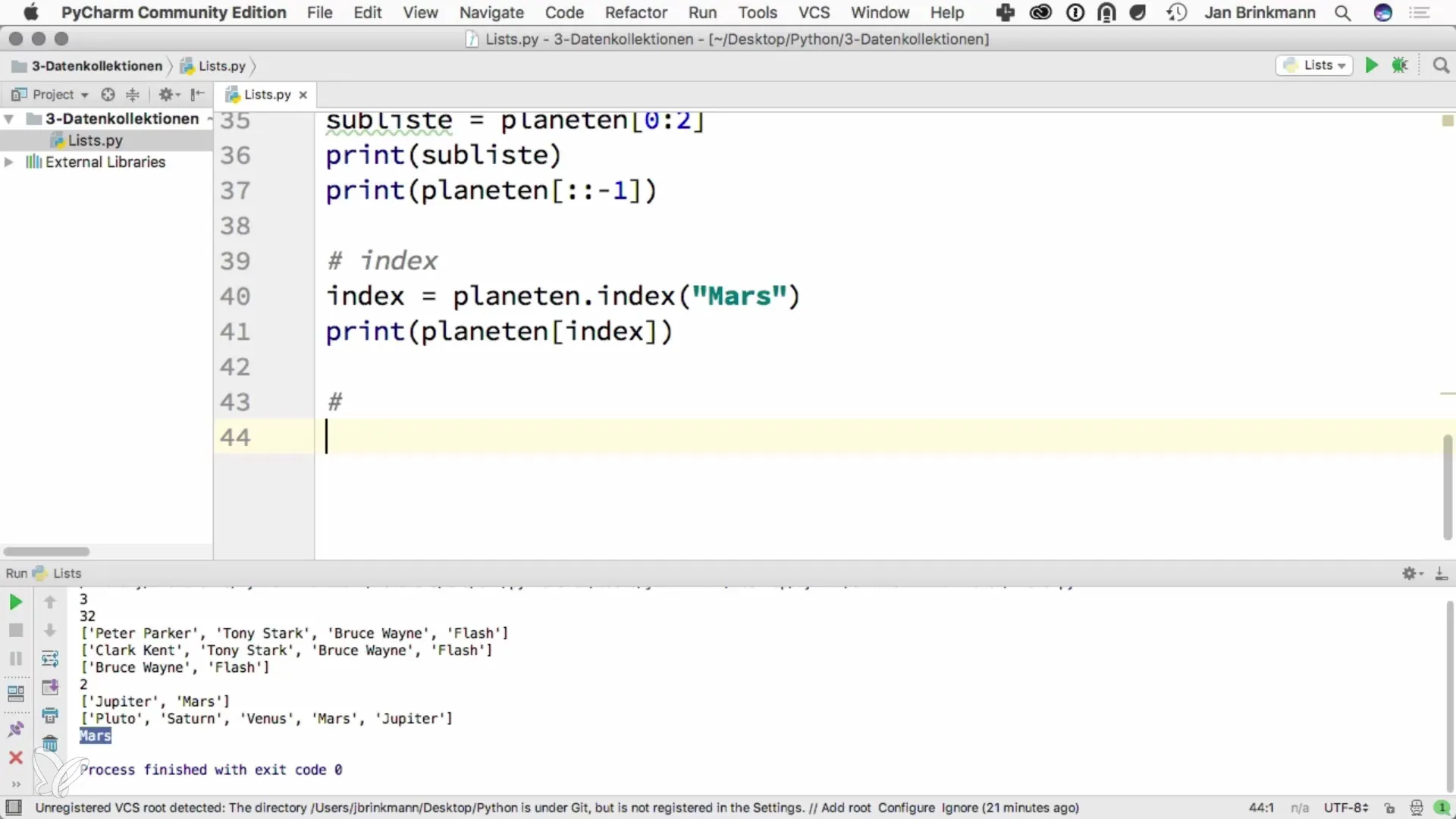
Summary – Lists in Python: Flexible Data Structure
In this tutorial, you have learned how to work with lists in Python. You now know how to create, access, edit, and combine them. This knowledge forms the basis for many other programming concepts.
Frequently Asked Questions
What are lists in Python?Lists are ordered collections of elements stored in square brackets that can contain various data types.
How can I add elements to a list?You can add elements by using the append() or insert() methods.
How do I access elements of a list?You access elements of a list via their index, starting from 0.
What is slicing in Python?Slicing allows you to extract portions of a list by specifying a start and end index.
How can I determine the length of a list?You use the len() function to determine the number of elements in the list.


